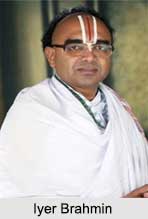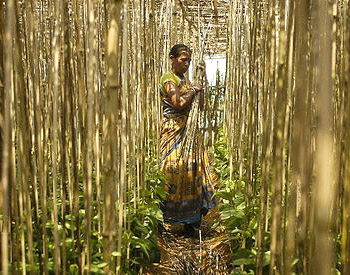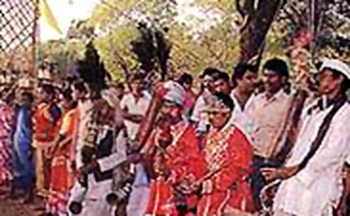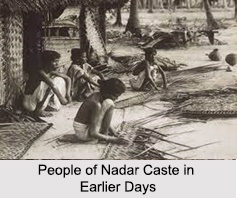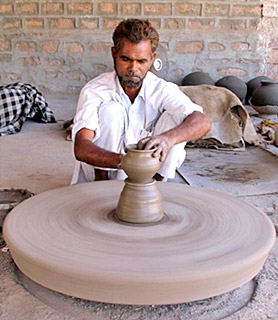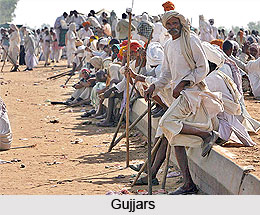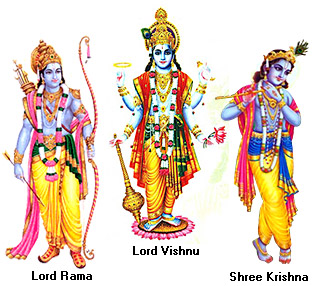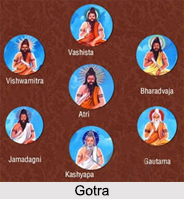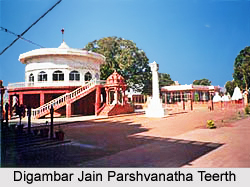 Shri Digambar Jain Parshvanatha Teerth Kshetra is located in Bijoliya in Rajasthan. The temple is dedicated to Lord Parshvanatha. The Kshetra is about 2 km ahead in south - east of Bijoliya Town. Bijoliya Teerth Kshetra is regarded as the place of penance (Tapa Bhumi) of Lord Parshvanatha. It is also regarded as the place of revolt (Upsarg Bhumi) by Kamattha (Enemy of Lord Parshvanatha since previous lives) and place of achieving Kevalgyan (Super natural knowledge). Bijoliya Teerth Kshetra is the first place of Samavsharan of Lord Parshvanatha.
Shri Digambar Jain Parshvanatha Teerth Kshetra is located in Bijoliya in Rajasthan. The temple is dedicated to Lord Parshvanatha. The Kshetra is about 2 km ahead in south - east of Bijoliya Town. Bijoliya Teerth Kshetra is regarded as the place of penance (Tapa Bhumi) of Lord Parshvanatha. It is also regarded as the place of revolt (Upsarg Bhumi) by Kamattha (Enemy of Lord Parshvanatha since previous lives) and place of achieving Kevalgyan (Super natural knowledge). Bijoliya Teerth Kshetra is the first place of Samavsharan of Lord Parshvanatha.
History of Digambar Jain Parshvanatha Teerth Kshetra
According to history of Digambara Jain Parshvanatha Teerth this kshetra is supposed to be more than 2750 years old. Many ancient petrographies are available here. A famous businessman of Ujjain City, Shri Lolark visited the place in V.S. 1226. He saw a dream where he was asked to dig a particular place near a pond and unearth the idol of Lord Parshvanatha. The next morning he acted accordingly and found the magnificent idol of Parshavanatha. Apart from this idol many idols of goddess Ambika, Padmavati, Shri Dharnendra and Kshetrapal were also found. A beautiful temple was constructed in V.S. 1226 and the idols were installed on the day of Phalguna Krishna in V.S. 1226.
The temple is associated with many legends and miracles. According to one miracle, few
Englishmen had come here in year 1858. They investigated the place and saw the rampart surrounding of the temple and petrography. They believed that some hidden treasure might be available here. Hence they put mines of explosives around the temple but before they could fire the explosive, a dense flock of honey bees attacked on them. They were thus forced to run away.
Another miraculous incident took place in the V.S. 1958. The people upon seeing the temple without the deity thought that the idol of Lord Parshvanatha might be located in the basement. The king was told about it who ordered to dig the place. Many people went to the temple and saw a stone lying there. The word `Sopan` meaning staircase was written on it. The stone was removed and the place was dug. However could be discovered from there. Suddenly a King Cobra appeared from the southern gate and stayed there. Thus all the people returned from there.
Temple of Digambar Jain Parshvanatha Teerth Kshetra
The Temple of Digambar Jain Parshvanatha Teerth Kshetra is a Panchayatan Mandir surrounded by a rampart. It has a central temple that is dedicated to Lord Parshvanatha.
The temple is adorned with a magnificent pinnacle made of stone. The images of 24 Jain Tirthankaras have been beautifully carved with the idol of Lord Parshavanatha idol in center over the gate. Images of Lord Indra, Chamarendra, Dharanendra, Ambika and Padmavati and many others have been beautifully carved on it.
Apart from this many other temples are also located here. Several mini temples have been built around the ancient temple that houses the idols of Jain Tirthankaras. Two magnificent Manastambha or Columns of Dignity have been constructed here. Feet image of 10 Ganadharas, of Lord Parshvanatha and 1000 others deities can be seen here on a rock. Two ancient Stupas have been constructed here that houses standing idols on all sides. A beautiful Samavsharan Mandir also has been constructed here. A Chaubeesee Mandir having 24 idols of Tirthankars is also located here. These idols are all in standing posture. The Ganadhar Parameshthi Mandir is situated in the vicinity.
In the east of Kshetra near the bank of river Reva so many big rocks may be seen. It is supposed that these rocks were thrown by Kamattha to disturb Muni Parshvanatha from Tapa (Penance). This is described in Petrography.
The temple organises annual gatherings. The day of Gyan Kalyanaka of Lord Parshvanatha is celebrated in the month of Chaitra. It also celebrated the day of Janma Kalyanaka of Lord Parshvanatha in the month of Pausha. The day of Moksha Kalyanaka of Lord Parshvanatha is observed in the month of Shraavana. Digambar Jain Parshvanatha Teerth Kshetra also has provisions for Dharmshalas or rest houses for the pilgrims. The place is well connected with Road, rail and air. Busses are available from Kota, Bundi, Udaipur, Chittorgarh, Bhilwara etc. for Bijoliya and than for Kshetra from Bijoliya Town. The Kota Junction is the nearest railway station on Delhi-Mumbai at 90 km of distance from Bijoliya. The airport is located at Kota at a distance of 90 km and Udaipur at a distance of 225 km.










